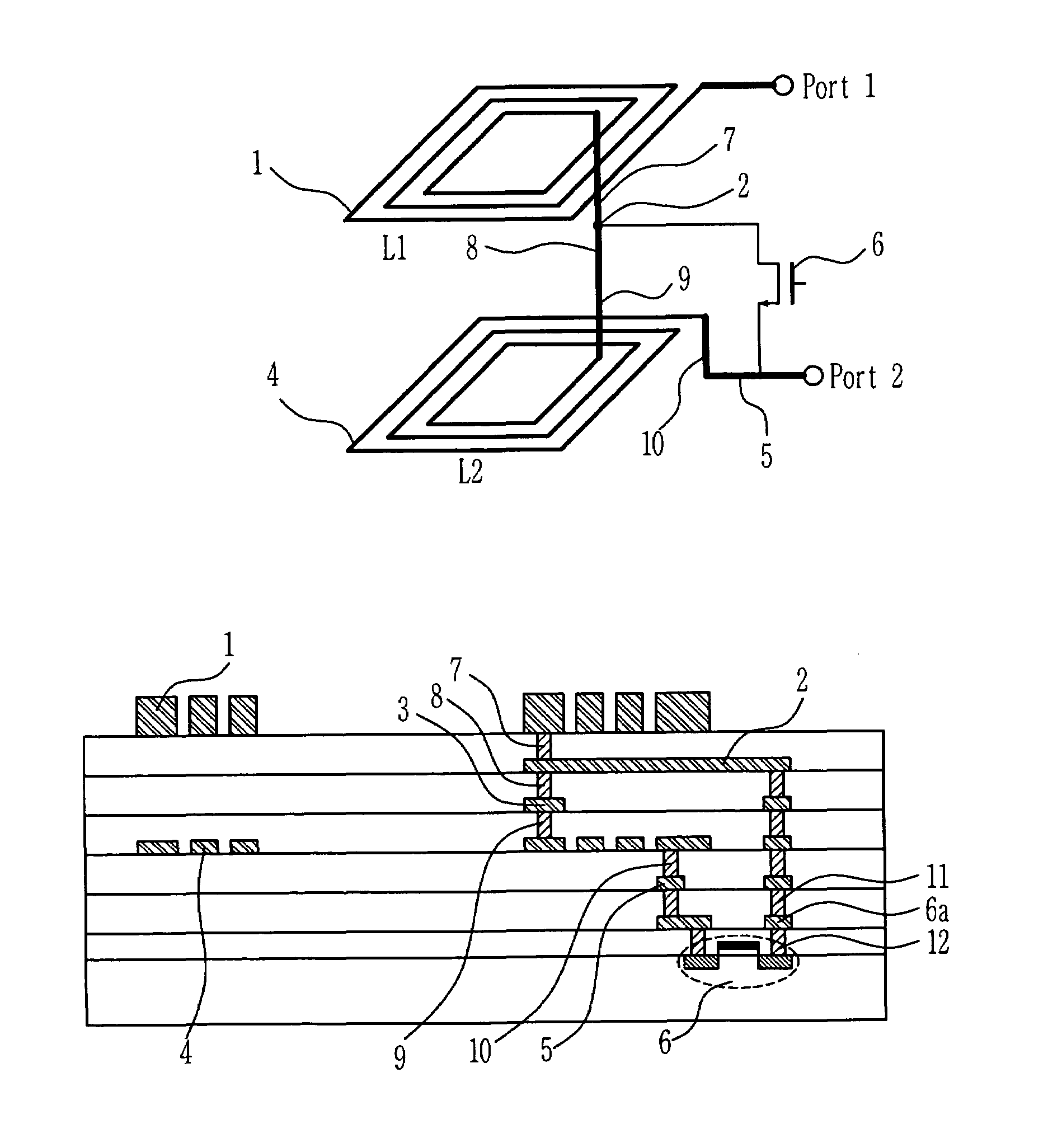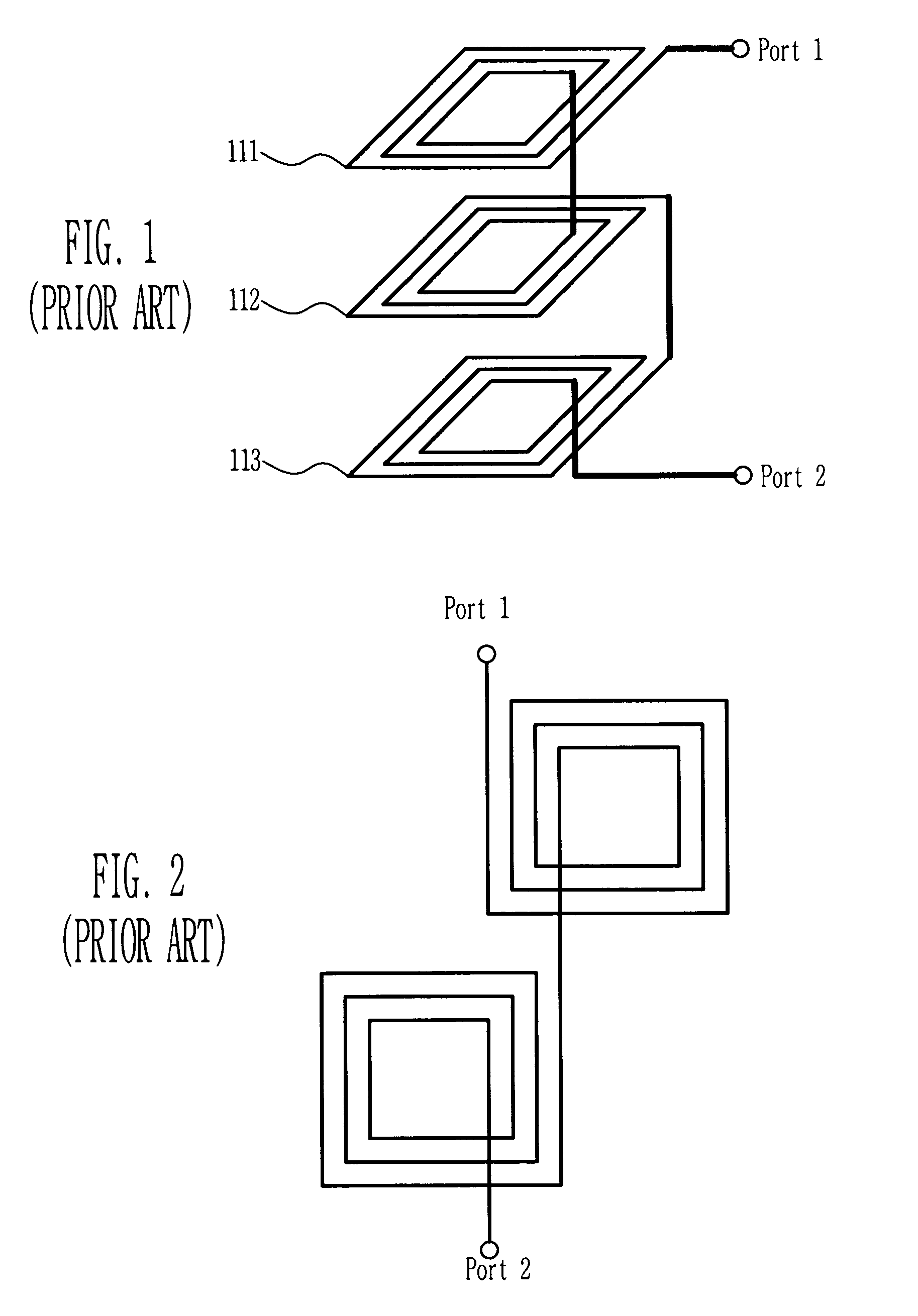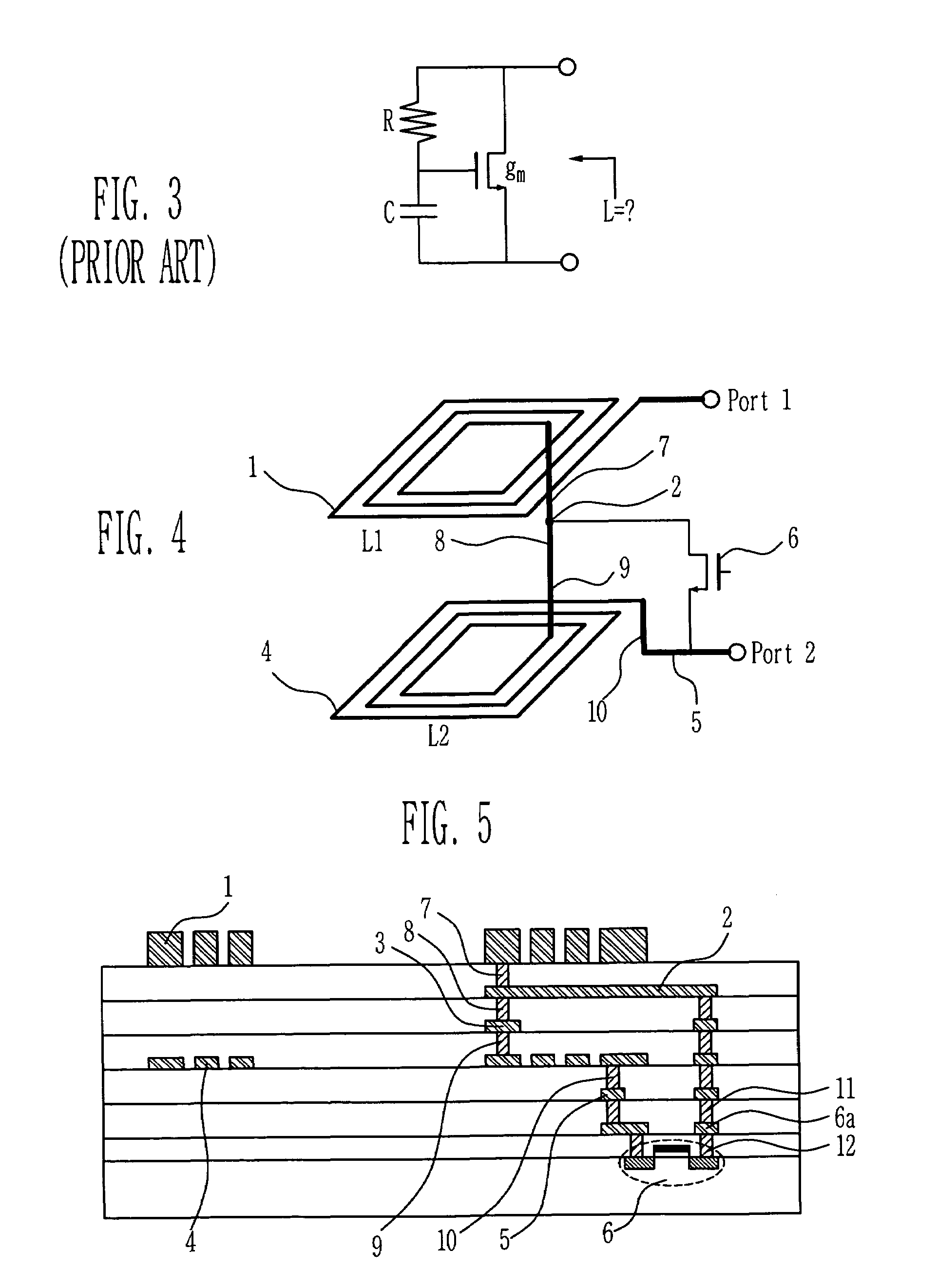Stacked variable inductor
a variable inductor and inductor technology, applied in the direction of inductance, inductance, discontinuously variable inductance/transformer, etc., can solve the problems of inability to use inductor above the resonance frequency, inability to vary the impedance, and the complexity of the rf blocks of recent rf ic technology to achieve the effect of variable characteristics
- Summary
- Abstract
- Description
- Claims
- Application Information
AI Technical Summary
Benefits of technology
Problems solved by technology
Method used
Image
Examples
first embodiment
[0031](First Embodiment)
[0032]Hereinafter, the integrated variable inductor in accordance with the first embodiment of the present invention will be explained in detail with reference to FIGS. 4 and 5. FIG. 4 is a concept view for explaining a stacked variable inductor in accordance with a first embodiment of the present invention, and FIG. 5 shows a cross sectional view that is applied to actual substrate by using CMOS technology in accordance with the first embodiment of the present invention.
[0033]Referring to FIG. 4, a switching element 6 is connected between stacked upper inductor and lower inductor L1 and L2 using CMOS technology that have different values of inductance when the element is turned on / off, thereby the variable inductor can be implemented as single stacked inductor. One terminal of each of upper and lower inductors L1 and L2 is connected to the port 1 or port 2, and the other one of each of upper and lower inductors L1 and L2 is connected each other by contact el...
second embodiment
[0042](Second Embodiment)
[0043]Hereinafter, an integrated variable inductor in accordance with the second embodiment of the present invention will be explained with reference to FIG. 7. Difference between the first and second embodiments can be described for the number of turns of inductor L1 and L2.
[0044]In the second embodiment, the variable inductance range of one inductor can be increased from adjustment of turns of each inductor. Alternatively, when the transistor is turned on, total inductance has an inductance value of L1 if the transistor is an ideal switch. But, there exists a resistance Ron of the transistor, so the number of L2 turns can be increased in order to increase the impedance of the inductor L2 higher than impedance of the transistor while the transistor is On state.
third embodiment
[0045](Third Embodiment)
[0046]Hereinafter, a stacked variable inductor using three inductors 35, 37, and 38 each formed on a different layer in accordance with the third embodiment of the present invention will be explained with reference to FIG. 8. For example, inductors are formed by metal layers each on sixth, fourth, and second layers, and a first switching element 39 is connected between a terminal 36 and a port 2, and a second switching element 40 is connected between a port 2 and a terminal between the inductor 37 and inductor 38.
[0047]In this embodiment, the inductance can be varied to three values in accordance with the ON / OFF states of switches S139 and S240. It is also understood that Ron and Coff when the switch is turned on / off should be taken into consideration as is described in the above embodiments.
PUM
| Property | Measurement | Unit |
|---|---|---|
| operation frequency | aaaaa | aaaaa |
| carrier frequency | aaaaa | aaaaa |
| carrier frequency | aaaaa | aaaaa |
Abstract
Description
Claims
Application Information
 Login to View More
Login to View More - R&D
- Intellectual Property
- Life Sciences
- Materials
- Tech Scout
- Unparalleled Data Quality
- Higher Quality Content
- 60% Fewer Hallucinations
Browse by: Latest US Patents, China's latest patents, Technical Efficacy Thesaurus, Application Domain, Technology Topic, Popular Technical Reports.
© 2025 PatSnap. All rights reserved.Legal|Privacy policy|Modern Slavery Act Transparency Statement|Sitemap|About US| Contact US: help@patsnap.com



